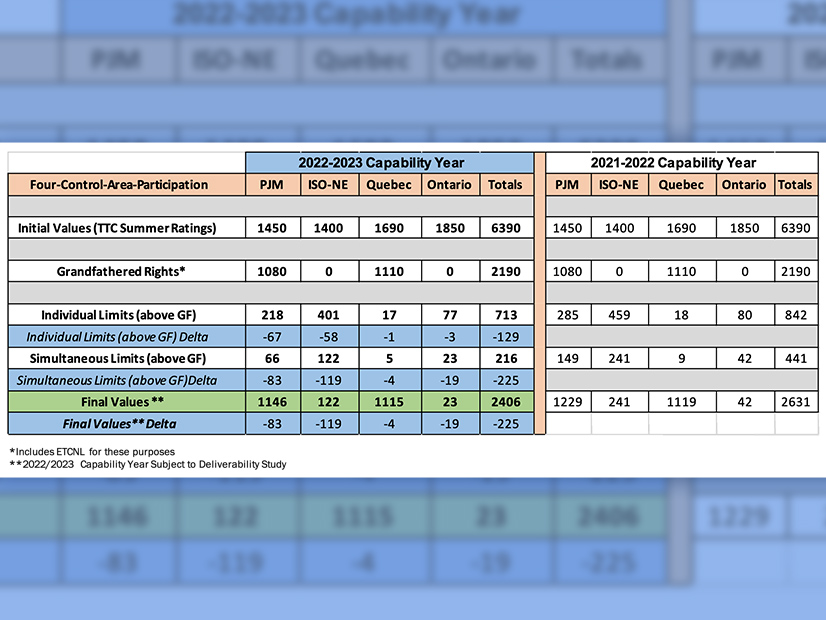
Updates External ICAP Rights
The NYISO Business Issues Committee on Wednesday approved revisions to the Installed Capacity (ICAP) Manual that update capacity import limits for the 2022/23 capability year.
The ISO completed deliverability testing and determined that all of the import rights are deliverable, said Pallavi Jain, senior ICAP market operations engineer. The update is part of an annual process to determine the maximum amount of import capacity allowed from neighboring control areas.
NYISO performed simulations to determine capacity imports allowed without violating the loss-of-load expectation (LOLE), one day in 10 years. The ties excluded were interface facilities with unforced capacity deliverability rights; controllable lines from PJM into the New York Control Area; and the NUSCO 1385 Northport-Norwalk Harbor Cable between Long Island and Connecticut.
Concerns on Response to FERC
One stakeholder brought up the issue of NYISO responding to FERC’s Feb. 9 deficiency letter regarding the ISO’s January filing on its comprehensive mitigation review and capacity accreditation methodology (ER22-772).
Among other issues, FERC asked the ISO to define “marginal reliability contribution” and to “explain in detail how NYISO would calculate the marginal reliability contribution of a capacity accreditation resource class using a ‘system [effective load-carrying capability] methodology.’”
“If the NYISO is responsive to FERC’s questions, it will necessarily be prejudging a number of the issues that we were all to have collectively discussed over the next few months, and that is a concern to us,” said Aaron Breidenbaugh, director of regulatory affairs at energy management company Centrica Business Solutions.
“As you know, we were not supportive of joining the two issues [buyer-side mitigation and capacity accreditation] at FERC, nor are we supportive of the marginal accreditation approach,” Breidenbaugh said. “We think there’s a lot of questions that remain to be answered, and obviously there’s a difference of opinion on that given what was filed at FERC.”
If the ISO feels pressured to answer FERC before stakeholders can discuss the issues, “it seems like in doing so they’re likely to run afoul of the commitments made to the market participants that those issues be resolved in the stakeholder process,” he said.
NYISO is still very focused on working with stakeholders on the many questions regarding the techniques used for calculating capacity accreditation factors, said Michael DeSocio, director of market design.
“We’re going to continue full speed ahead working with you all on these issues making sure everyone understands how the calculations will work and understands the details that go into these calculations,” DeSocio said. “That conversation will actually start next week, and we’ll continue to move the ball forward on that as quickly as we can.”

